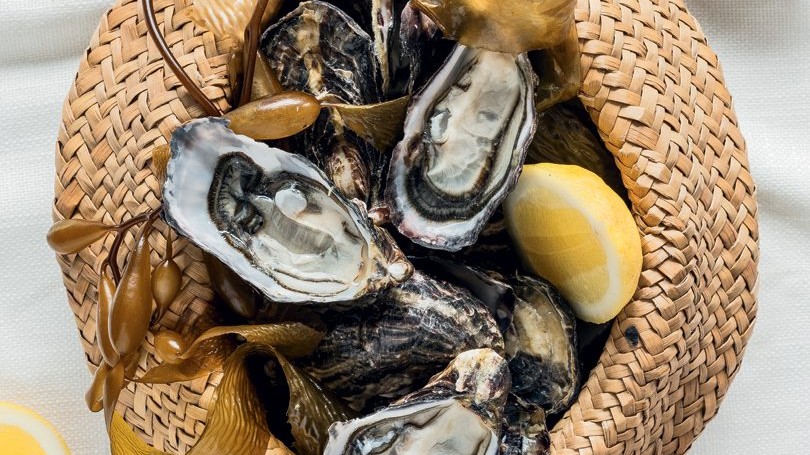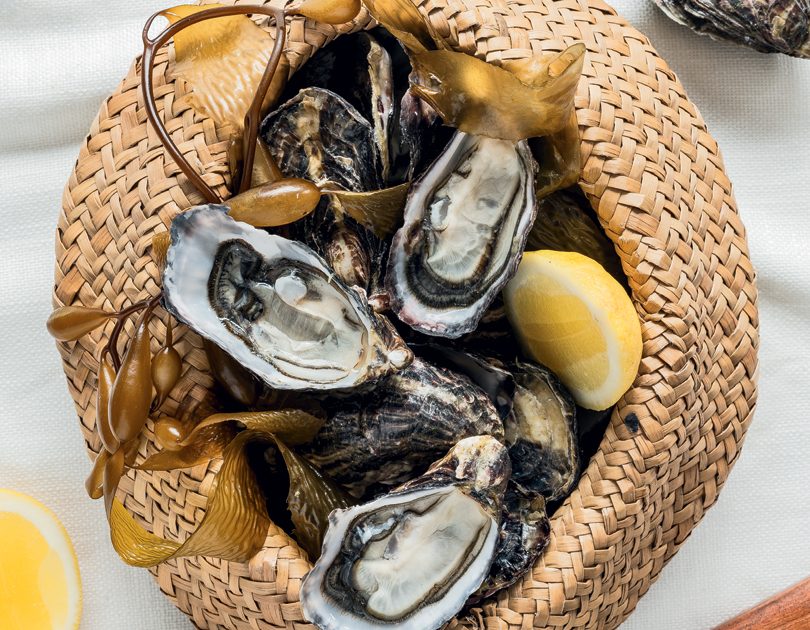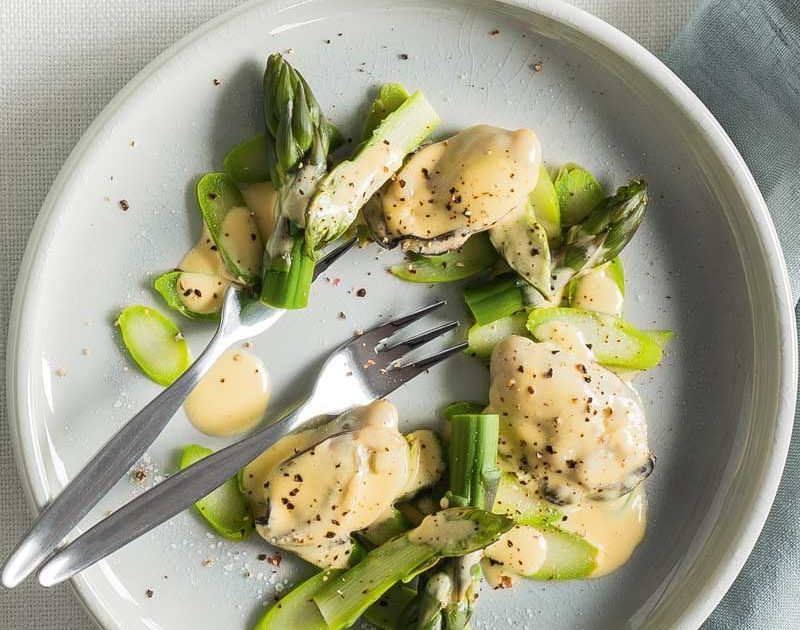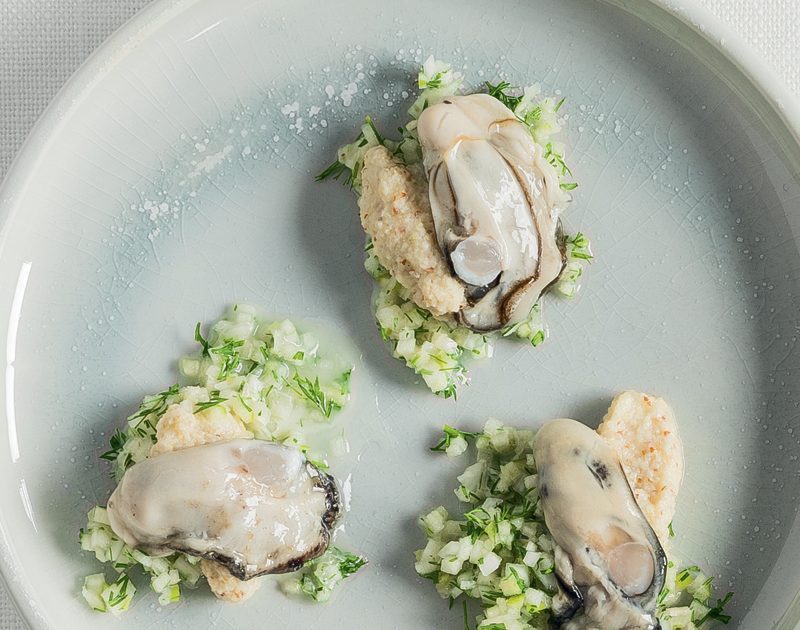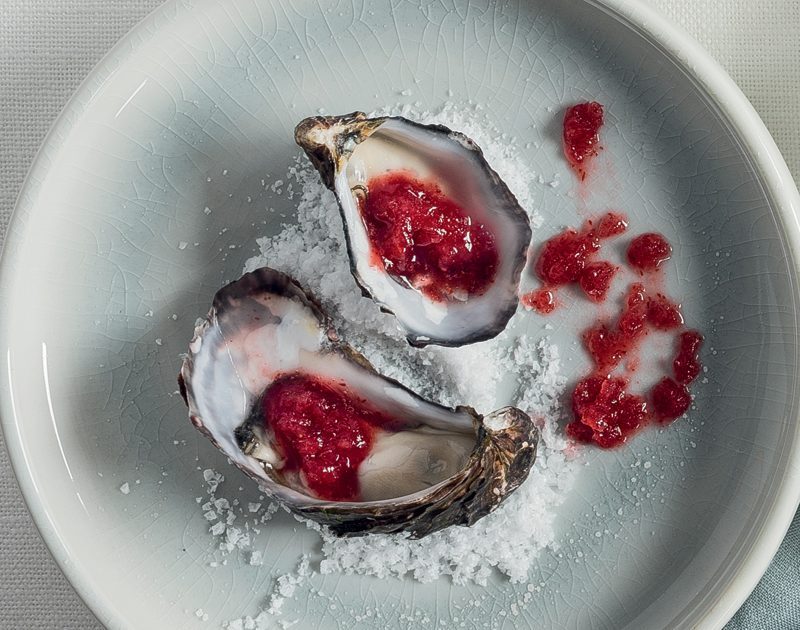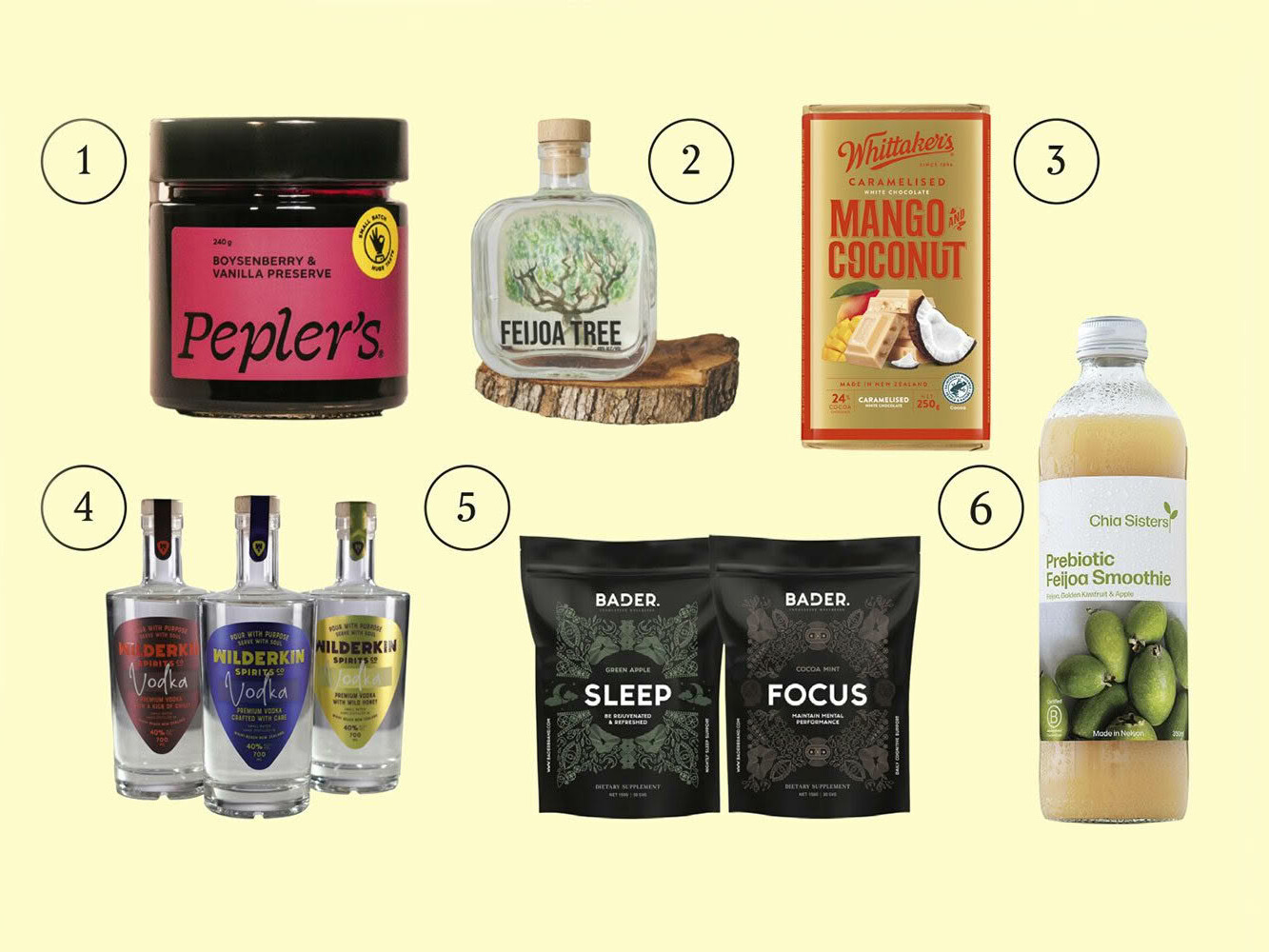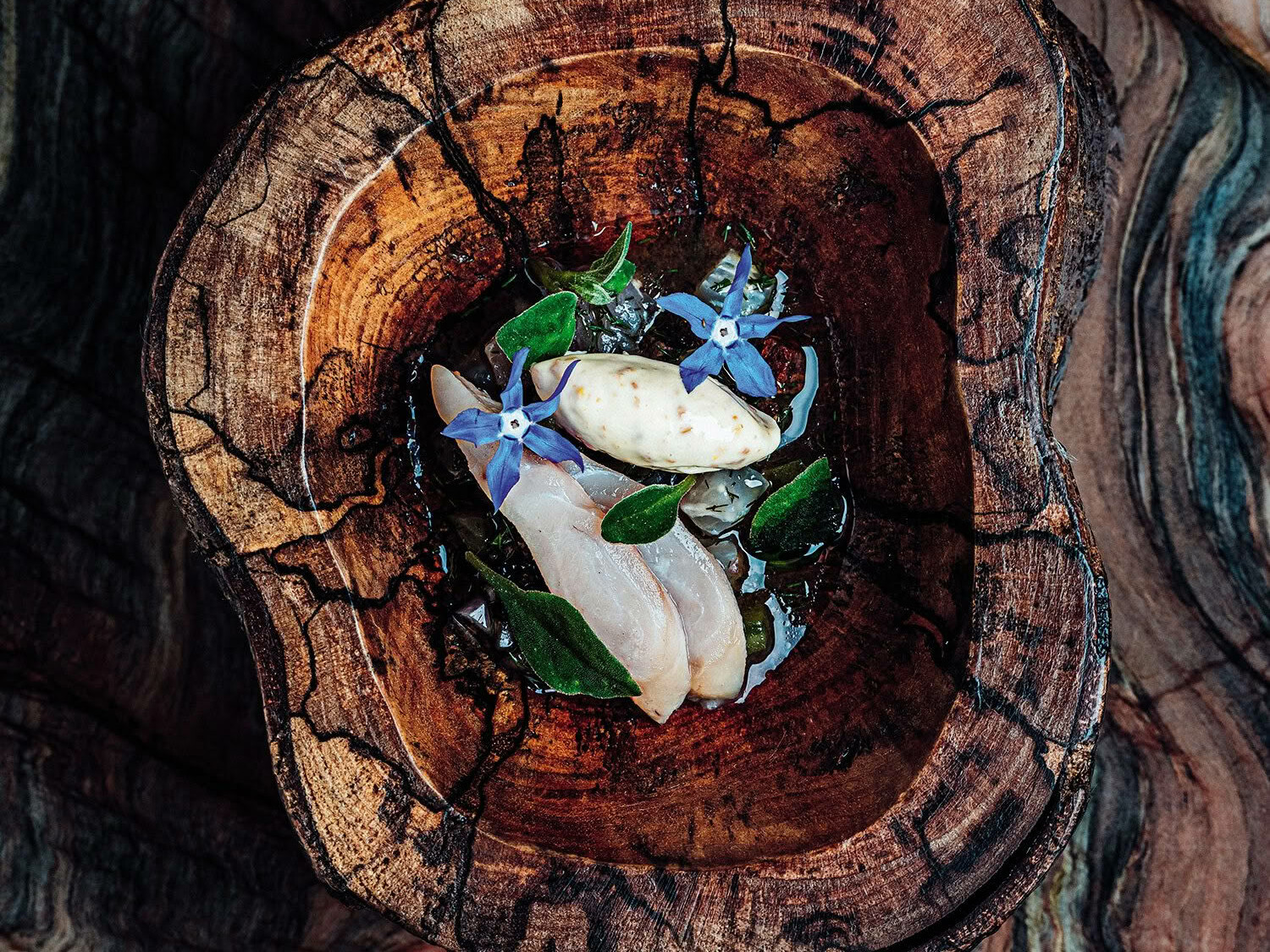MARTIN BOSLEY IN PRAISE OF THE OYSTER – THREE DISHES TO GET THE PARTY STARTED
It arrives, a crushed ice-covered platter, a muslin-bound lemon, a dish of shallot vinegar and a bottle of hot sauce, a tiny two-pronged fork and, nestled in among the ice, the bivalves themselves, pale and ivory against the pretty, dark shells. I apply a condiment and sweep the meat from the shell to my mouth in one go, feeling the exhilarating rush of salt, sea and quivering flesh, and get ready to do it again. A selfish ritual for one of the greatest foods on the planet – the oyster. You don’t do oysters? Then you and I will never truly be friends.
The oyster is the quintessential seafood. It is unique and luxurious, rich and delicious, exotic yet simple. It reflects its environment on any given day, with flavour and condition completely subject to tides, weather and water. More than any other food, the oyster reflects its ‘merroir’, the marine equivalent of a wine’s terroir. Since Roman times, dizzying varieties of oysters have always been named for the estuaries, bays, inlets or nearby towns from which they came. They are possibly the first food that came with exclusive proof of provenance.
Oysters should ideally be shucked no more than 45 minutes before serving, for freshly opened oysters throw an amazing liquor which is a crucial part of the experience. Opening an oyster is not as tricky as you think – an oyster knife with a guard on it and a folded tea towel will be all you need. Place the oyster firmly on a chopping board, cup side facing down, the pointed hinge of the oyster facing towards you. Protect your non-knife hand with the folded tea towel. Imagine the top of the oyster is 12 o’clock, the hinge six o’clock. Now insert the knife into the two o’clock position where the top and bottom shells meet, moving the knife in a rhythmical rocking motion from side to side, pushing the knife further in so that the top shell starts to come away. Slice under the upper shell towards you and cut through the adductor muscle, releasing the top shell. The hard part is now complete. Try not to lose any juices and clean away any bits of broken shell. Tip the oyster down your throat and repeat.
There are few foods that inspire such passionate responses as to how they should be eaten and, frankly, if they should even be eaten at all. My favourite way to eat oysters is raw; that first hit of cold succulence, a splash of salty water on the tongue followed by the taste of sweet, buttery, minerally flesh gives up complexities of taste and texture.
Finally, the swallow – as the oyster slides easily down my throat – is over far too soon. A purist I may be, wanting nothing more than a pinch of salt to adorn them or a squeeze of lemon juice but I do not dismiss the idea of cooking my oysters – battered and fried is not the sacrilegious act that many believe it to be, as they can remain succulent, all crisp and golden. Indeed, this may be the best way to get someone who is nervous at the thought of eating an oyster at all to indulge and overcome often unfounded fears. As Jonathan Swift said, “He was a bold man that first ate an oyster”.
TIPS FROM BOZ
Store half-shell oysters on a bed of ice in the fridge.
Keep the ice in a bag for live oysters or they may drown in the freshwater melt.
Always store oysters cup-side down.
Don’t buy oysters that are more than 5 days from harvest.
Not eating oysters in a month without the ‘R’ is a misconception.
It is safe to eat oysters year-round.
SEE MORE FROM CUISINE
We’re Watching… Joshua John Phillips
Kerry Tyack meets a young chef whose motivation and hard work have…
Design Files / Kitchen Artefacts / Handcrafted culinary utensils / Te Miro
Food is love in action. That’s what Tom Muir’s mum used to say. And…

